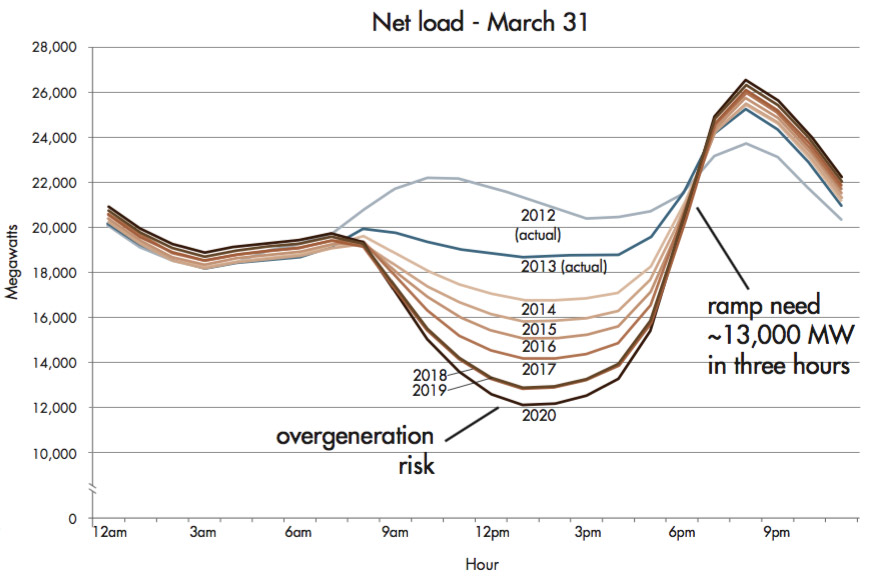V2X* as a Solution to the Duck Curve
By Dr. Jose Torre-Bueno, CCE Executive Director
Executive Summary
The state of California has a goal of having eight million zero emission vehicles on the road by 2030. The vast majority of these will be battery electric vehicles (EV). This could either exacerbate the problem of providing energy when the sun goes down and solar power becomes unavailable (the so-called “duck curve”) or be a major source of support for the grid if vehicles are allowed to send power from their batteries when parked at charging stations (EVSE, Electric Vehicle Service Equipment). This is variously referred to as V2G (vehicle to grid), V2H (vehicle to home), or V2X (vehicle to anything).

Thee “Duck Curve” – Source: California Independent Systems Operator (CAISO)
Currently V2X is not considered a potential source of grid stabilization in the CA Public Utility Commission’s (CPUC) planning process. As is, this will lead to the approval of costly grid infrastructure that will be needed to support transportation electrification.
The Center for Community Energy is proposing an alternative model in which vehicles are charged during the day with power from local solar arrays mounted over parking lots. These vehicles could then carry charge home and use some of it where they are parked at night.
|
|
|
|
| READ THE FULL PAPER – UPDATED DEC. 15, 2023 |
*V2X: Vehicle-to-Everything, e.g., Home, Building, Device, etc.
